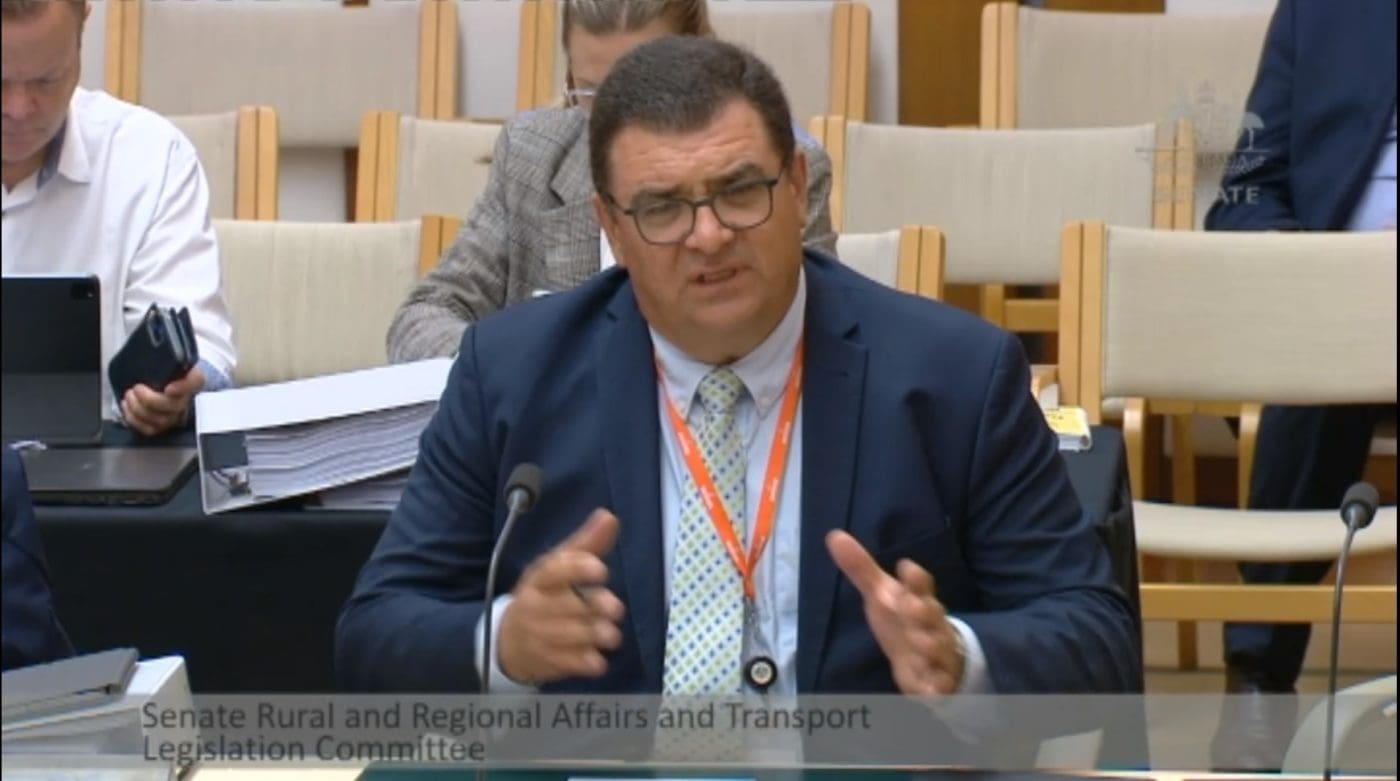
MLA managing director Jason Strong responding to Senate Estimates questions last night
BIOSECURITY levies, price distinctions between eastern and western Australia for sheep and the impact of live export suspensions on sheep value dominated Rural and Regional Affairs Senate Estimates discussions yesterday involving the major livestock sectors.
Some onlookers had anticipated questions surrounding the apparent disparity between retail supermarket pricing for beef and lamb, and a dramatic decline witnessed this year in livestock prices, but none of the senators present broached the subject.
NLIS user experience ‘varied’ says MLA
Nationals Senator Bridget McKenzie asked Meat & Livestock Australia managing director Jason Strong about the typical “quality of user experience” for livestock producers completing National Vendor Declarations or e-NVDs.
Mr Strong said the experience of users interacting with the database would be ‘varied.’
“One of the objectives of the Integrity Systems Company is to allow the industry to have a traceability and verification system that is progressive, and evolves, and provides services and the facility to all of our producers,” he said.
“However one of the challenges in doing that is the significant variation in levels of connectivity in regional areas, use of technology, and use of systems.”
One of the challenges with vendor declarations and the NLIS systems was that the interaction for some producers “was not very often,” Mr Strong said. “It might only be a small number of times per year – so getting familiar and confident in using the system at times can be challenging,” he said.
“Have you had a lot of feedback about that from levy payers? Sen MacKenzie asked. “If so, how and where does that get reported?”
“We get quite a lot of feedback on NLIS, from a range of stakeholders,” Mr Strong said.
“The NLIS and the Livestock Production Assurance system has a range of stakeholders, from government agencies through to individual producers, lotfeeders and meat processors. We have a help line which is readily accessible to everyone – but we also monitor performance of the database, the engagement with the database, and feedback from stakeholders. This is reported to the ISC board and the management team,” he said.
Sheep pricing disparity
WA Liberals Sen Slade Brockman referred MLA back to earlier senate estimates discussions with ABARES executive director Dr Jared Grenville over the relative price of sheep between western and eastern parts of Australia.
“Dr Grenville contended, and the minister also quoted this figure, that the WA sheep prices were stronger than east coast prices. I’ve looked on MLA’s own website and seen trade lambs in WA this week at 330c/kg, against NSW 492c and Victoria 516c. For mutton, WA price is quoted at 84c, NSW 112c and Victoria 96c,” Sen Brockman said.
“That’s the latest information on MLA’s website – what do you think the price differential is? I just think the Minister (Murray Watt) got it completely wrong.”
Ag minister Murray Watt responded himself with a clarification, saying what he actually said was that ABARES’ analysis of MLA’s National Livestock Reporting Service data had found that the fall in sheep and lamb prices in WA had proportionately been the same, or less, than those that had occurred in the eastern states.
“The figures I quoted did not say that the price in WA was higher than the eastern states – what we are talking about is the fall in prices. What I said was the national trade lamb indicator price averaged around 43pc lower year-on-year in September 2023, compared with WA which averaged around 30pc less – so a lower fall, compared with 12 months ago,” Minister Watt said.
“So on the record, prices for lamb, mutton and ewes are all lower in WA than in the east?” Sen Brockman asked.
“My understanding is that traditionally, prices in WA have been lower than on the east coast – partly because if freighted east, there’s extra cost involved,” Minister Watt said.
Bugs robbing agriculture?
Among other topics, Queensland One Nation Senator Malcolm Roberts asked about the Rural Industries Research and Development Corporation’s promotion and awareness efforts over ‘bugs as food.’
“Bugs are not agricultural production,” Sen Roberts claimed.
“The sustainable development goals that RIRDC is championing call for short supply chains. Bugs as food will be grown in urban intensive production facilities – not in the regions, in the bush. You’re literally transferring sales, jobs and the future of rural commodities from the bush to city factories,” he claimed.
This is about getting control of agriculture and food. Why are you doing it? he asked RIRDC managing director John Harvey.
“Particularly on insects, we do see it as an emerging food industry,” Mr Harvey said.
“We do see some opportunities, particularly in areas like recycling food waste. Certainly with insects like mealy bugs we can process food waste, and turn it into a new food product. Some petfood products coming out are made from crickets – there is interest in it, there’s a global market, it’s a cheap source of protein material going into petfood,” he said.
